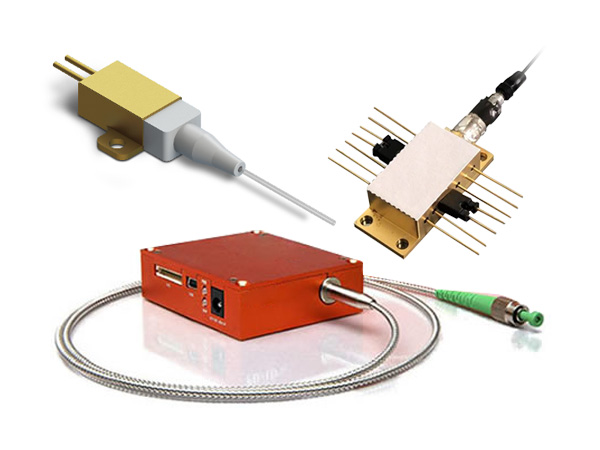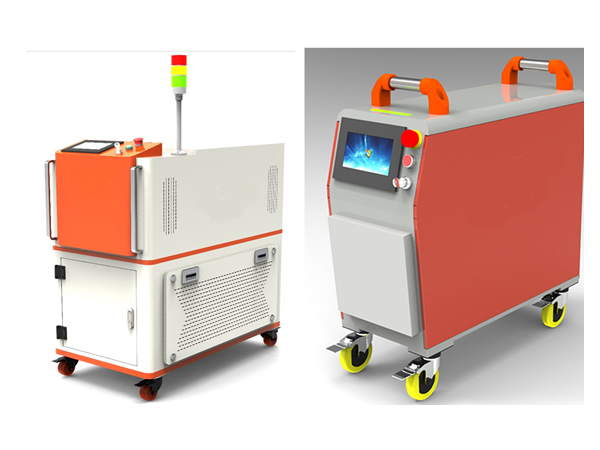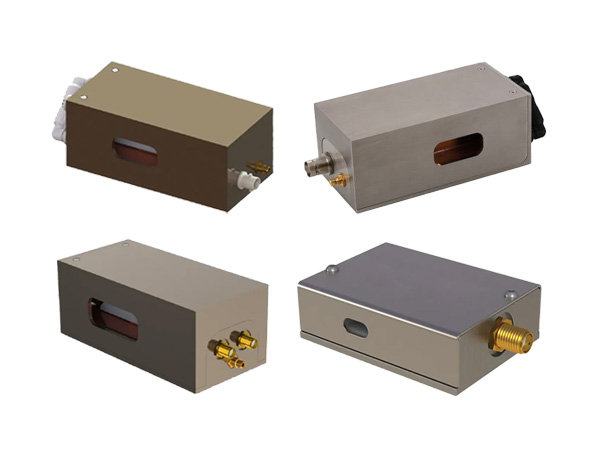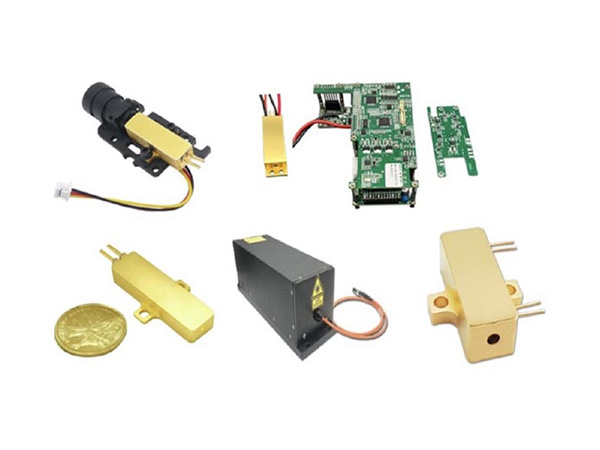Laser Beam Delivery Articulated Arms: Core Solutions for Precision Optical Transmission
In today's world where laser technology is widely applied, from industrial processing to medical cosmetology, the precise transmission of laser energy is a key link to ensure the performance of equipment. As a core component connecting laser transmitters and processing points, the articulated arm transmission system, with its flexible multi-angle adjustment capability and stable optical performance, has become an indispensable part of various laser systems.
Core Functions and Applications of Articulated Arm Transmission Systems
Laser beam delivery articulated arms are mainly used to cooperate with laser systems of different wavelengths such as CO₂ and YAG to efficiently transmit laser energy from the emission source to the processing point. Its design adopts a 6 or 7-joint structure, connected to the laser through a laser mounting plate and various coupling devices, and the end is connected to the hand-held part through an adapter. It can not only meet the flexible operation needs under complex working conditions but also ensure the stability of laser transmission.
This system has a wide range of application scenarios. In the industrial field, it can be used for precision processing such as laser cutting and welding; in the medical cosmetology field, it can cooperate with laser equipment to achieve precise treatment operations, and the keyword "beauty" also implies its application in the beauty industry.
Parameter Analysis of Mainstream Series Products
STTL Series Articulated Arms
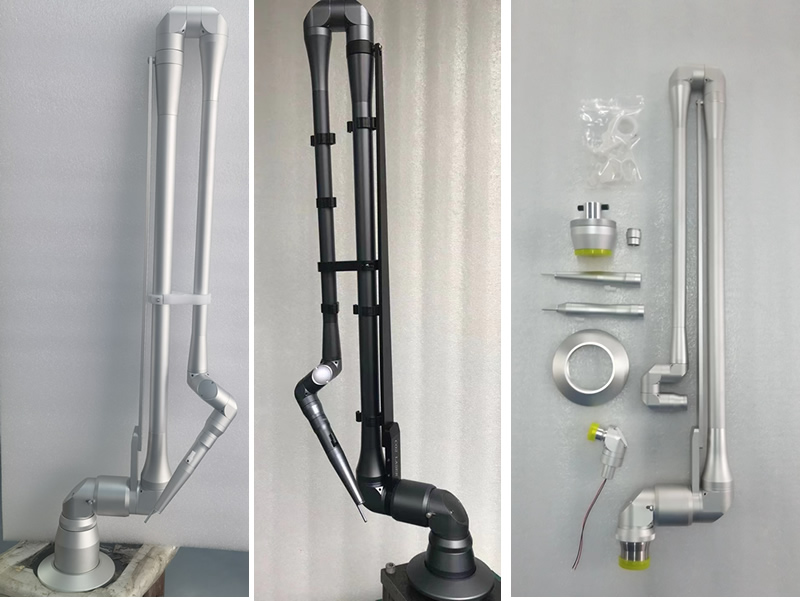
Taking the STTL-10.6-7-14-1415 model as an example, this product is specially designed for lasers with a wavelength of 10.6mm. It has 7 joints, the maximum beam aperture is Φ14mm, and the extended length reaches 1415mm (composed of multiple segments such as 80mm, 108mm, 611mm, etc.). Its optical path deviation is controlled within ±0.3mm, ensuring high precision of laser transmission.
In terms of reflection performance, the total reflectivity of this model is ≥85%@10.6mm. It is equipped with 4 pieces of Φ25.4x3mm and 3 pieces of Φ18x3mm reflectors, with an installation interface of M20x1mm. It provides two appearance options: silver and blue-black, and the end can be matched with focusing components of F=50mm or F=100mm.
SSZ Series Articulated Arms
The SSZ series covers multiple models for different laser types, which can be divided into Nd:YAG laser-specific and CO₂ laser-specific categories.
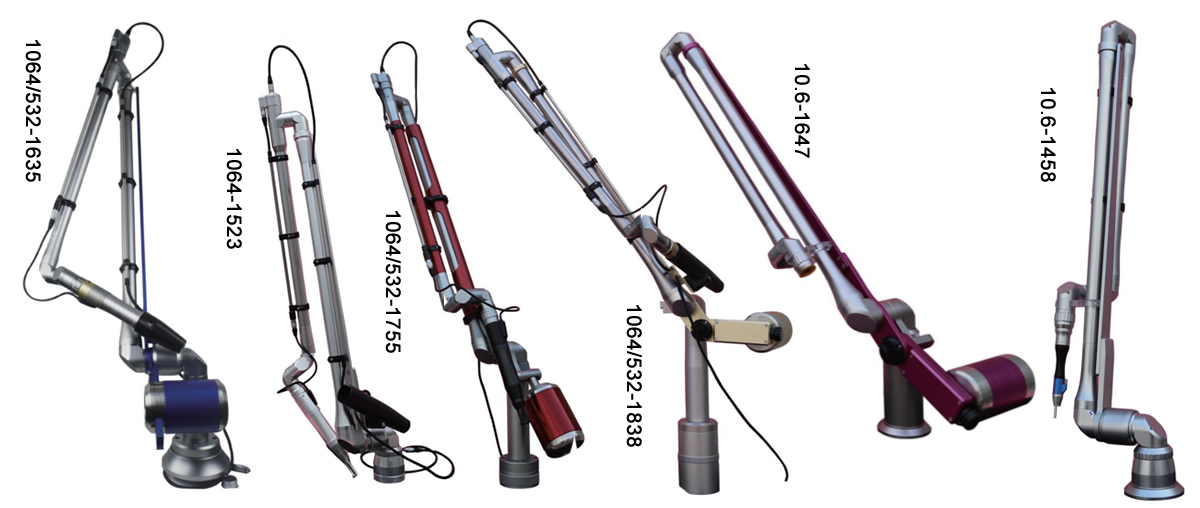
Nd:YAG laser-specific models: Such as SSZ-1064/532-7-17-1635 and SSZ-1064-7-17-1523, both are 7-joint designs with a maximum beam aperture of Φ17mm and an optical path deviation of ±0.3mm. Among them, SSZ-1064/532-7-17-1635 has an extended length of 1635mm, suitable for 1064+532nm wavelength, with a reflectivity of 99.6% at 1064nm wavelength and 98% at 532nm wavelength; SSZ-1064-7-17-1523 is suitable for 1064nm wavelength with an extended length of 1523mm, and both have an installation interface of M22x1.5mm.
In addition, the SSZ-1064/532-7-17-1838 and SSZ-1064/532-7-17-1755 models in the same series have extended lengths of 1838mm and 1755mm respectively. Other core parameters are consistent with the above models, providing options for different operating range requirements.
CO₂ laser-specific models: SSZ-10.6-7-17-1458 and SSZ-10.6-7-17-1647 are specially designed for 10.6um wavelength, with 7 joints, a maximum beam aperture of Φ17mm, an optical path deviation of ±0.3mm, and a reflectivity of 98%@10.6um. The extended lengths of the two are 1458mm and 1647mm respectively, and the installation interface is M20x1mm.
Technical Advantages of Articulated Arm Transmission Systems
Overall, these articulated arm products realize flexible spatial adjustment through multi-joint design. High-precision optical components ensure efficient transmission and path stability of laser energy. The parameter differentiation of different models meets the needs of laser systems with different wavelengths and operating ranges. Whether in industrial processing with strict precision requirements or medical cosmetology fields with high safety and stability requirements, these articulated arms can provide reliable beam transmission solutions for laser equipment.
Application Cases of Articulated Arm Transmission Systems
Industrial Manufacturing Field
In the automobile manufacturing industry, laser cutting and welding processes widely use laser beam delivery articulated arms. For example, a well-known automobile manufacturer uses an articulated arm transmission system equipped with CO₂ laser (such as SSZ-10.6 series) combined with multi-axis industrial robots to realize 3D laser cutting and welding of automobile body parts. The 98% reflectivity and ±0.3mm optical path deviation control of this series of articulated arms can ensure stable transmission of laser energy. With the flexibility of the 7-joint design, the laser beam can accurately reach the processing parts of complex shapes, resulting in neat cutting edges and firm welding. It not only improves production efficiency and product quality but also reduces the frequency of mold replacement and lowers production costs.
In the aerospace field, for the processing of high-precision parts, such as the drilling and trimming of engine blades, Nd:YAG laser combined with SSZ-1064 series articulated arm transmission systems plays an important role. The 99.6% high reflectivity of this series at 1064nm wavelength can reduce energy loss and ensure the precise energy output required for processing. Due to the high requirements of aerospace parts on precision and surface quality, the ±0.3mm optical path deviation control of the articulated arm transmission system can ensure the stability and accuracy of the laser beam during processing. The aperture accuracy of the processed small holes can reach the micrometer level, and the surface roughness is low, meeting the strict technical standards of the aerospace industry.
Medical Cosmetology Field
In the medical cosmetology industry, ultra-pulse carbon dioxide laser therapeutic instruments transmit laser energy with the help of light guide articulated arms (such as STTL-10.6 series), which are widely used in skin treatment. For example, when treating skin pigmented nevi, verruca vulgaris and other diseases, doctors can accurately apply the laser beam to the lesion by operating the hand-held part at the end of the articulated arm (which can be matched with focusing components of F=50mm or F=100mm). The high energy of the laser instantly vaporizes the lesion tissue, and due to the stable transmission performance of the articulated arm, the damage to the surrounding normal tissue is minimal, with quick postoperative recovery and few scar residues. In laser cosmetic surgeries, such as the removal of facial wrinkles, the articulated arm transmission system ensures that the laser energy acts on the skin surface evenly and accurately, stimulates collagen regeneration, achieves the effect of firming the skin and reducing wrinkles, and brings safe and effective treatment experience to patients.
Development Trends of Articulated Arm Transmission Systems
Intelligent and Automated Development
In the future, laser beam delivery articulated arms will develop in depth towards intelligence and automation. By integrating advanced sensors, the articulated arm can real-time sense its own position, posture and the transmission state of the laser beam, realizing self-calibration and adaptive adjustment. In industrial production, it can be deeply integrated with the factory automation system, automatically planning the laser processing path according to changes in production tasks, improving production efficiency and processing accuracy. In the medical field, intelligent articulated arms can assist doctors in more precise surgical operations, automatically adjusting laser parameters and irradiation positions according to the patient's physical characteristics and surgical needs, reducing surgical risks.
Improvement of Higher Precision and Stability
As various industries have increasingly higher requirements for laser processing precision, articulated arm transmission systems will strive to further improve precision and stability. In terms of materials, higher strength and lighter materials, such as carbon fiber composites, will be used to reduce the impact of the articulated arm's own weight on precision, while improving its rigidity and anti-vibration performance. In terms of optical components, reflectors and optical elements with higher reflectivity and lower loss will be developed, and the optical design will be optimized to further reduce energy loss and optical path deviation during laser transmission, ensuring that the laser beam can maintain high stability and precision during long-distance transmission and under complex working conditions.
Integration with Emerging Laser Technologies
With the continuous emergence of new laser technologies, such as ultrafast lasers and high-power fiber lasers, laser beam delivery articulated arms will actively integrate with them. For ultrafast lasers, the articulated arm needs to have faster response capability and higher pulse transmission precision to meet the transmission requirements of its ultra-short pulses and high peak power, expanding the application of ultrafast lasers in fields such as micro-nano processing and precision medicine. For high-power fiber lasers, the articulated arm needs to solve the problem of efficient coupling between large-core fiber and laser head, realize stable transmission of high-power lasers, and promote the wide application of high-power fiber lasers in fields such as thick plate cutting and deep penetration welding.
For more information on our Articulated Arms, please click here.
 English
English Français
Français Deutsch
Deutsch euskara
euskara Русский язык
Русский язык Italiano
Italiano Português
Português Nederlands
Nederlands Polski
Polski Greek
Greek Lietuva
Lietuva Türkçe
Türkçe 日本語
日本語 한어
한어 中文
中文 தாமில்
தாமில் فارسی
فارسی हिंदी
हिंदी Tiếng Việt
Tiếng Việt ภาษาไทย
ภาษาไทย Pilipino
Pilipino Indonesia
Indonesia தாமில்
தாமில்
